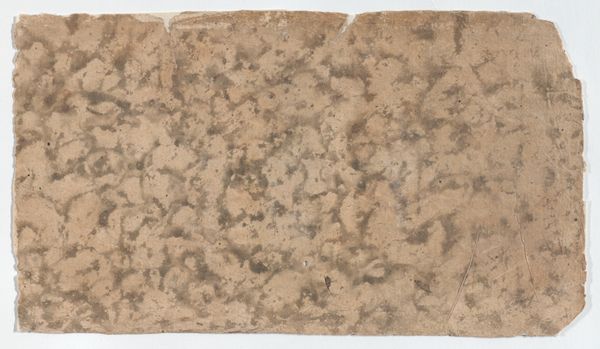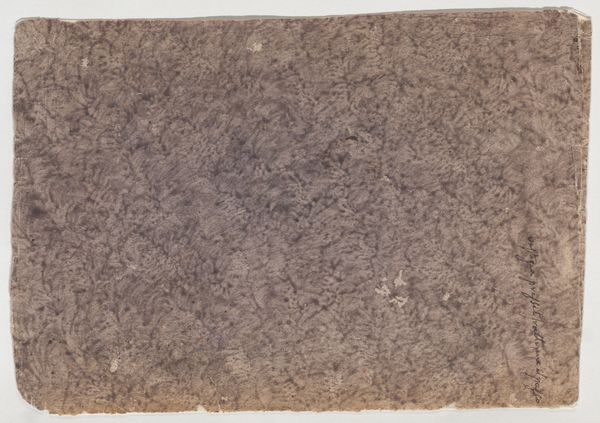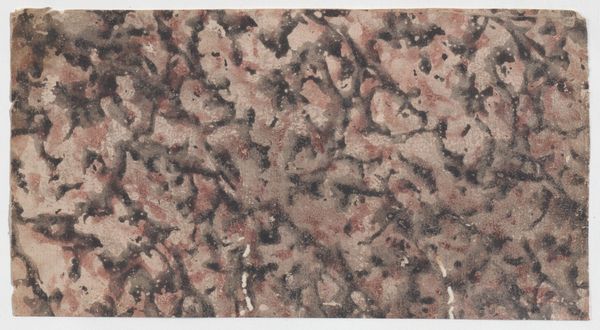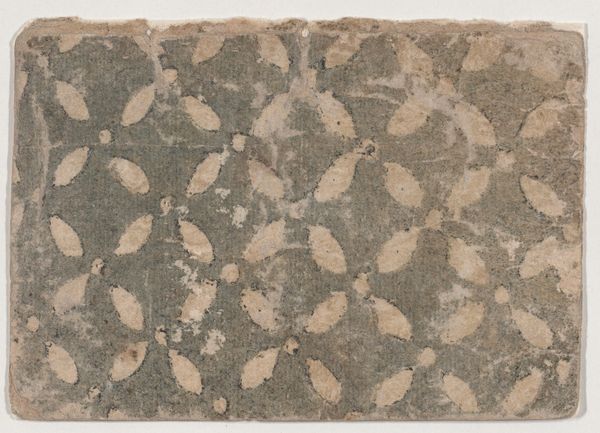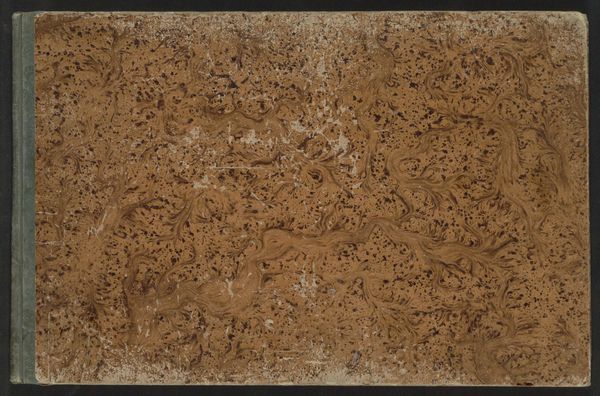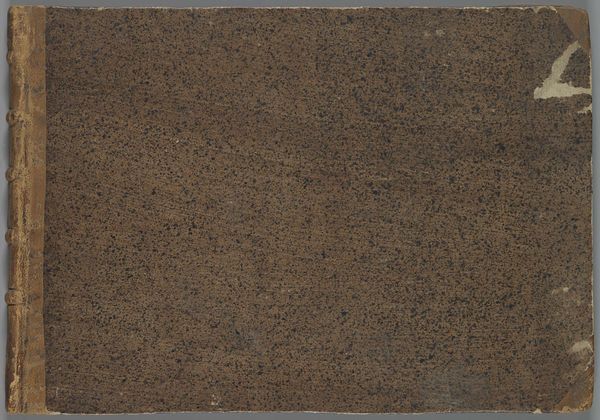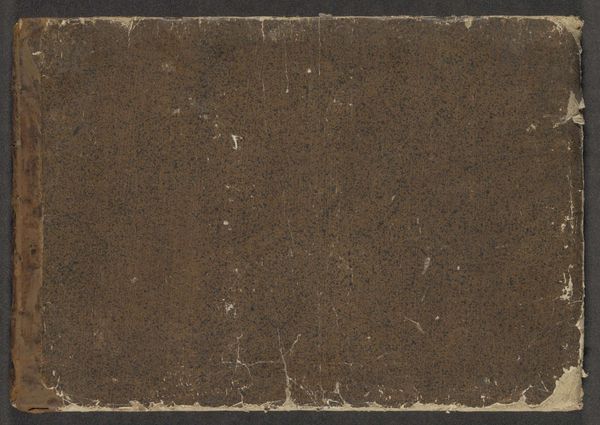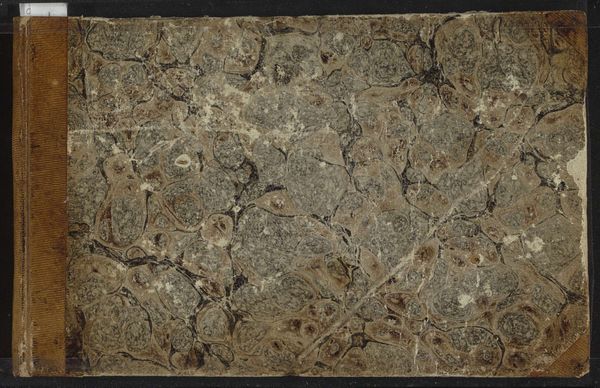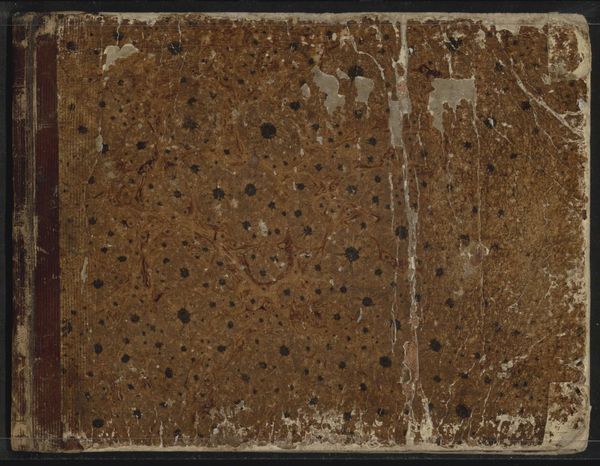
drawing, print, paper, impasto, monoprint
#
drawing
# print
#
paper
#
abstract
#
impasto
#
monoprint
#
geometric
#
watercolor
Dimensions: Sheet: 4 1/2 in. × 7 in. (11.5 × 17.8 cm)
Copyright: Public Domain
Editor: Here we have "Sheet with overall spotted design," a drawing or print on paper created sometime in the 19th century by an anonymous artist. The spattered effect is subtle, creating an all-over mottled appearance. What do you see in this seemingly simple work? Curator: This piece invites us to consider the very nature of mark-making and its potential subversiveness. How might an "anonymous" artist in the 19th century be engaging with, or even challenging, established artistic norms through this seemingly haphazard application of pigment? The randomness of the pattern disrupts the idea of intentionality and control, principles that were highly valued at the time, particularly when this piece may have been intended as textile design, and textiles frequently signified cultural heritage, gender roles, and social identity. Editor: That's fascinating. So, you see a potential challenge to the dominant artistic conventions of the time in this “randomness”? Curator: Exactly! Think about the social and political context of the 19th century. Art was often used to reinforce hierarchies and narratives. But here, we have a work that resists easy interpretation, a sheet filled with marks that could symbolize a sort of visual rebellion against enforced uniformity. Could this anonymity itself be a political statement? How does this aesthetic tie in with broader questions of gender or class identity? Editor: It makes you wonder what the artist intended. The design feels incomplete on its own. Maybe it's a fragment of something larger, representing fractured or marginalized voices. Curator: Precisely! Consider the materials—paper, drawing, print—often associated with ephemerality, with the everyday. Are we meant to contemplate its fragility, to think about its potential to decay, mirroring perhaps, the fleeting nature of power structures? Editor: I never considered the material itself holding significance. Thinking about this piece in terms of challenging norms and societal hierarchies offers such a powerful new interpretation. Curator: Indeed, viewing art through this lens allows us to understand its potential for social critique and resistance, even within the most abstract of forms.
Comments
No comments
Be the first to comment and join the conversation on the ultimate creative platform.
